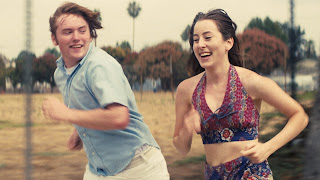Imperial Moviemaking | "A Movie" by Bruce Conner
A MOVIE by Bruce Conner, 1958, 11 minutes
In the 1958 avant-garde film A MOVIE, master editor and Beat artist Bruce Conner develops a riveting visual language to examine the connection between cinema and the course of American imperialism.
Beginning with an irreverent introduction, A MOVIE uses black and white newsreel footage to count down and tease the audience with a flashing image of a beautiful lady undressing. Repeating the words ‘A Movie’ and ‘Bruce Conner’, along with two false starts, the author initiates a stream of conscious visual language and introduces his central focus: the power of film to shape individual and geopolitical sentiments.
Diving directly into a high energy montage of Native Americans and Frontiersmen on horseback, Conner turns our attention to a historical account of the United States. Images of galloping horses transition to speeding train wheels and later automobiles and motorcycles competing on race tracks at breakneck speeds. Following a trajectory of industrialization, the sequence continues with raiding bombers, firing submarines, and atomic tests at Bikini Atoll. Much of the footage used throughout the film originates from newsreels, short documentary films that screened in movie theaters and were a source of information for millions of Americans. Later, newsreels developed into a blend of current events journalism with propaganda messaging during the First World War. From these overtly patriotic images, Conner reveals both a collective romanticization of America’s origin story and the myth-making capabilities of mainstream media. As an opening chapter, the documentary film identifies Manifest Destiny as America’s driving ideology–created by the initial collision of Western and Native American cultures, perpetuated by the film industry.
By editing war footage out of context, Conner hijacks the propaganda storyline with a scathing critique of America's brand of progress. Tranquil scenes of indigenous peoples in the tropics, working in cooperation and playing music, serve as an alternative vision of humanity and heighten the tragedy of modern war. A montage of boats, airships, and airplanes, instead of celebratory, appear heart-wrenching as the technology is used for increasingly superfluous and destructive activities. Most iconically, Teddy Roosevelt is seen passionately delivering a speech, his smug gestures cutting abruptly to a suspension bridge buckling under seismic activity. Transitioning from atomic explosions to underwater scuba divers entering a shipwreck, does Conner project self destruction of the human race and a return to the primordial waters from which we came? Framing a diver through a window of the wreck, and then staging a firm hand finding support on a railing, center screen, Conner gives a nod to the audience and the storytelling form of film as a tool for change. The last frame points upwards to a sparkling sun.


Comments
Post a Comment